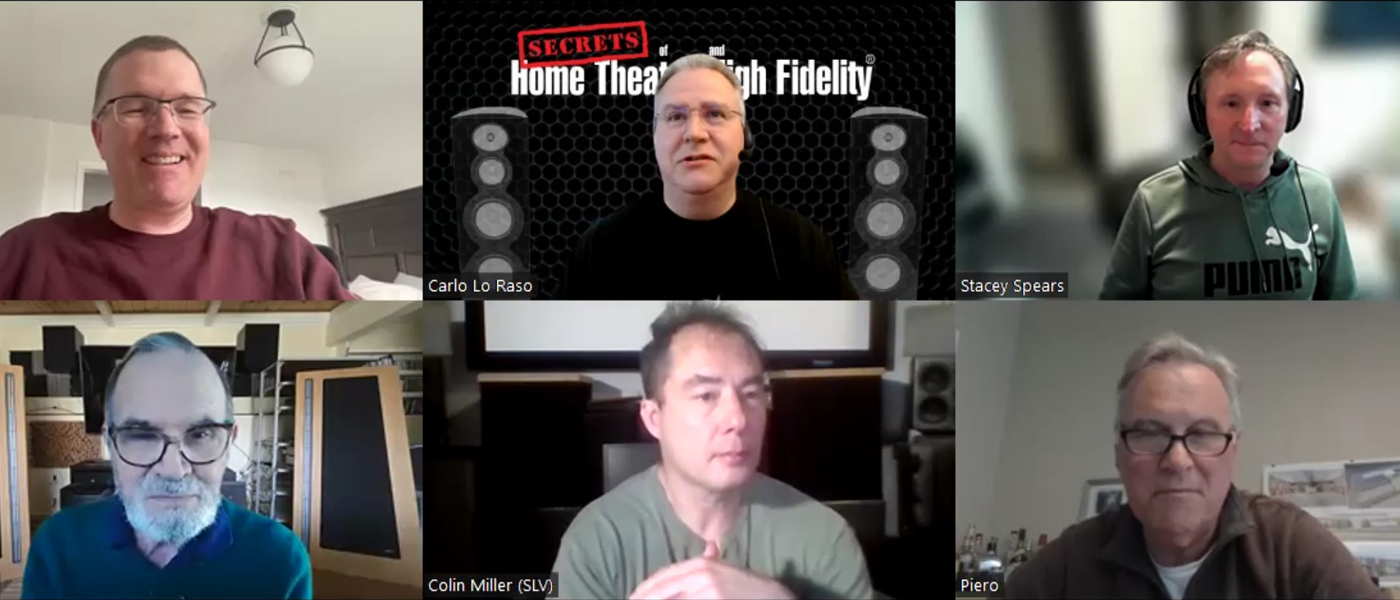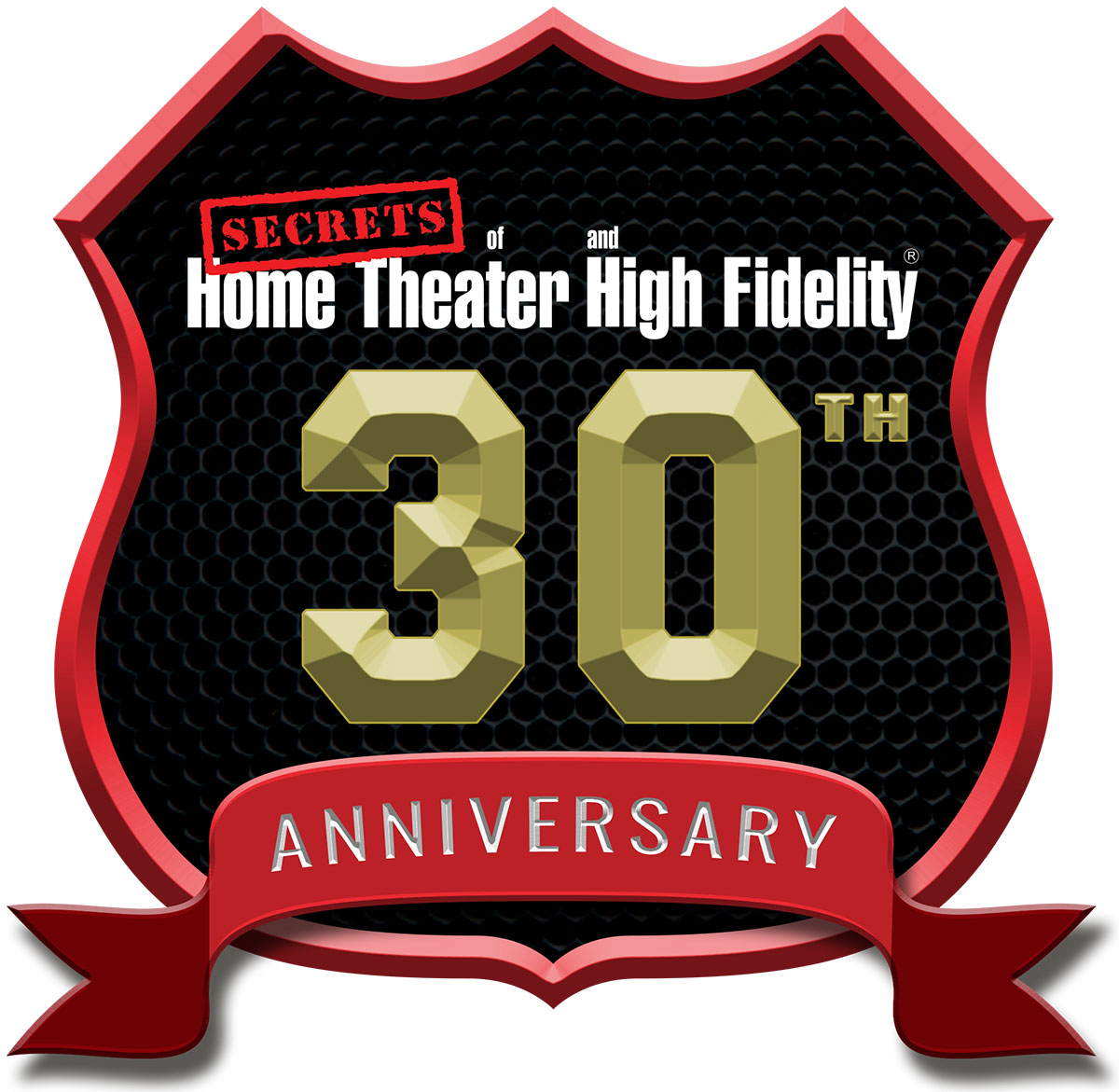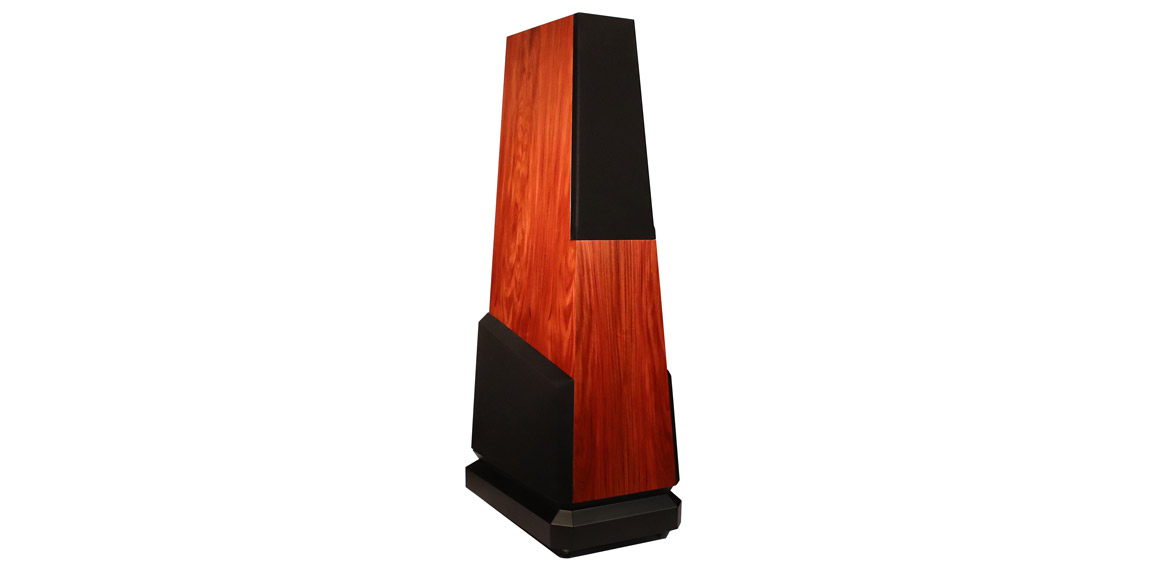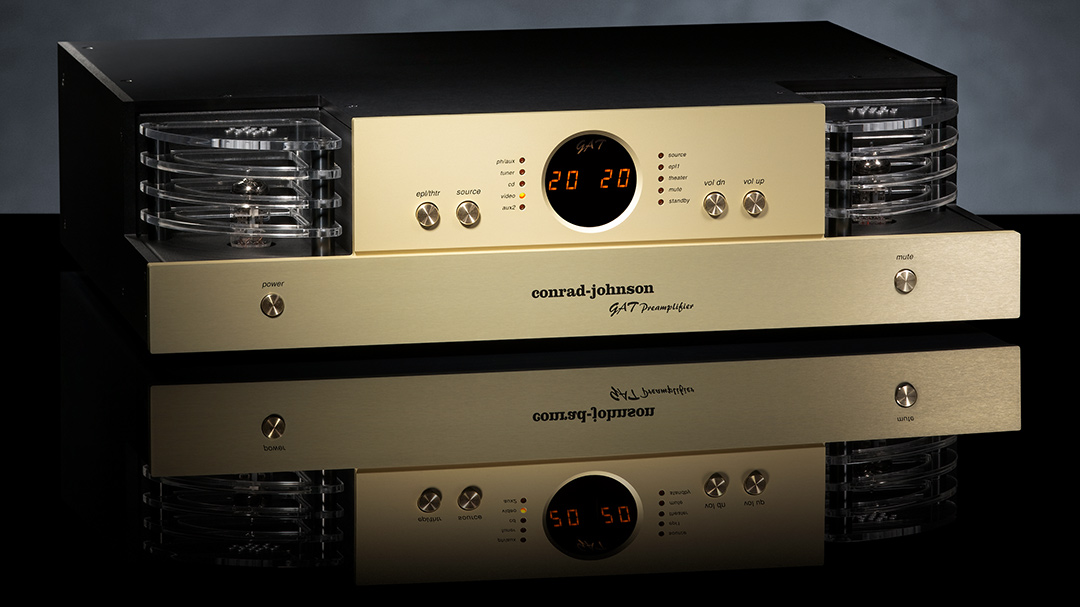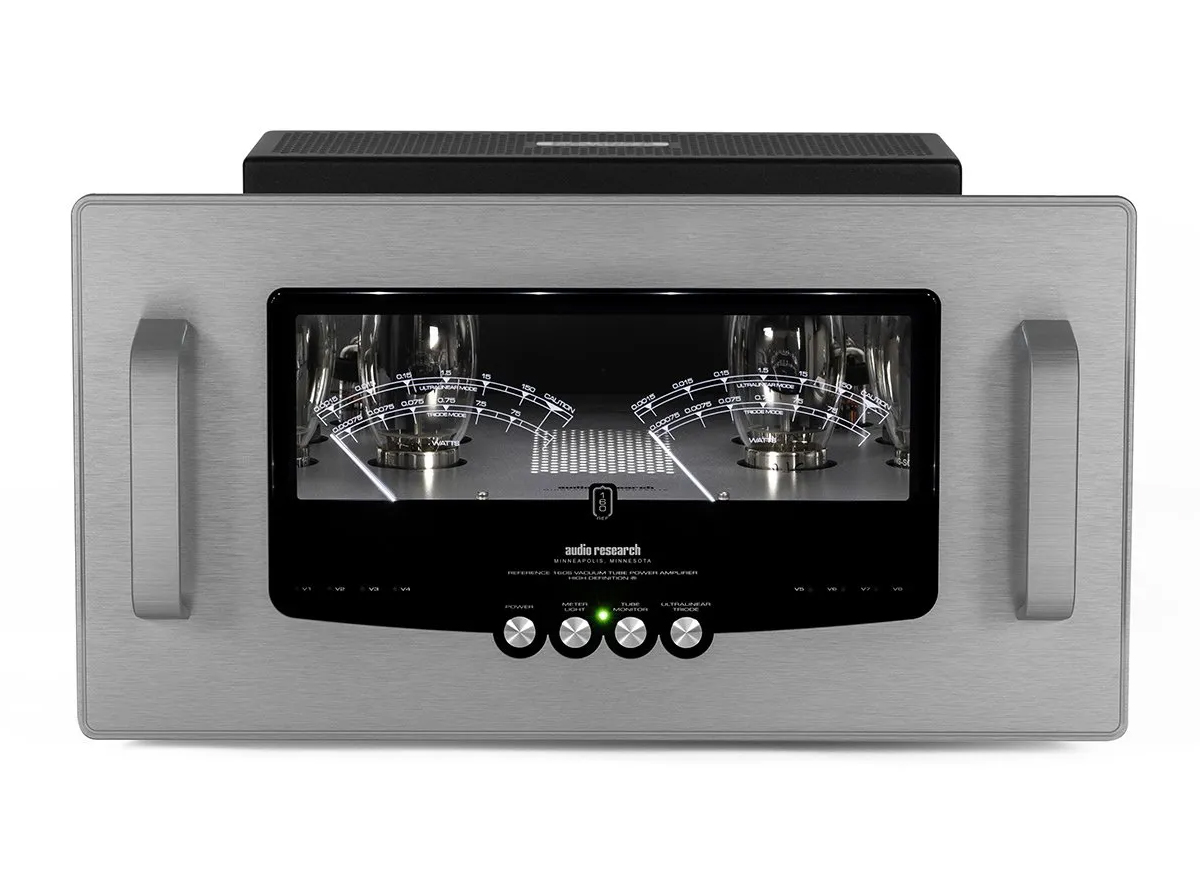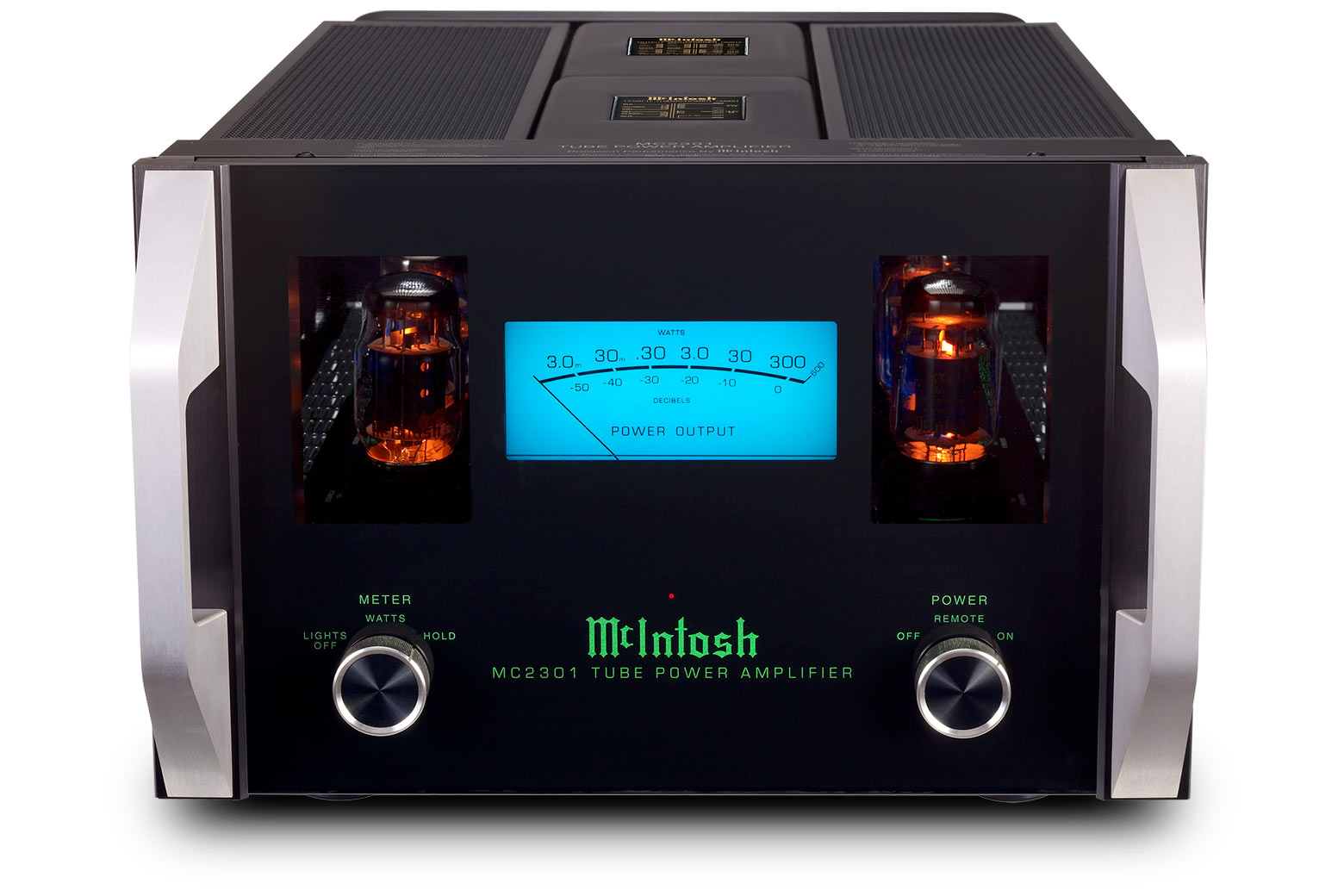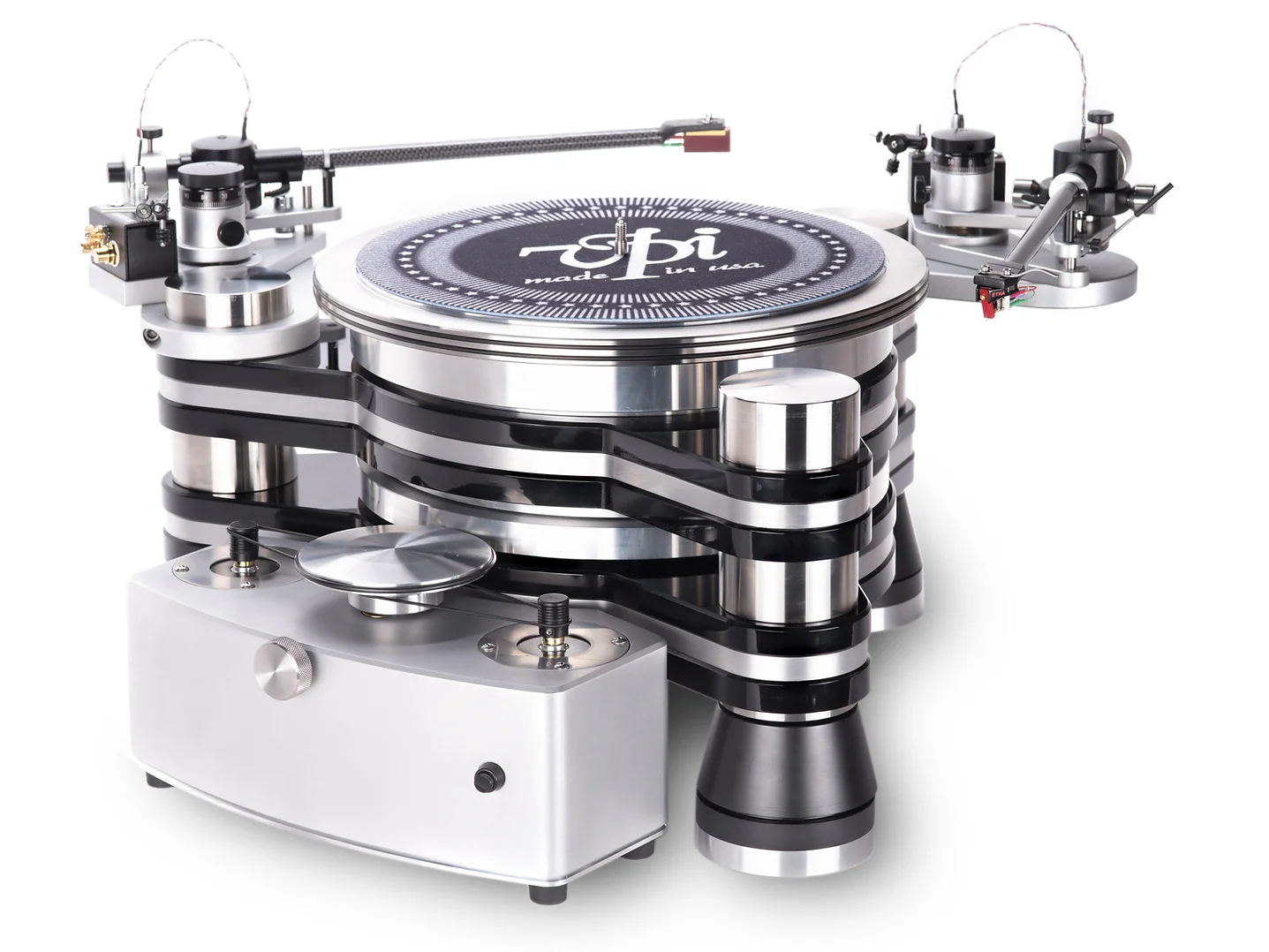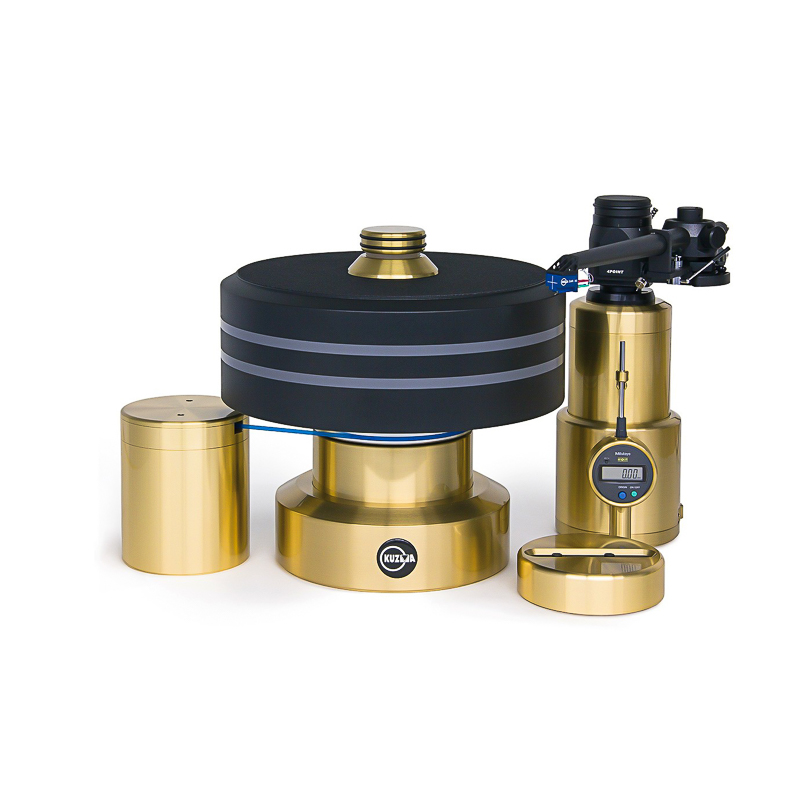In addition, I will mention a few of the many rebel designers responsible for designing and creating the wonderful equipment we still marvel at today.
These “rebel” designers were building tube gear when solid-state and digital seemed to be taking over the musical world, with tubes and analog circling the drain since “perfect sound forever” had just arrived. The designers did not set out to be rebels, they just naturally were, trusting their ears, and thereby giving us tube and analog options to this day. They did things their way, no apologies.
I, like many audiophiles, found the Vandersteen Model 2C speaker a great way to enter the audio world with a great value product. While being built in the small town of Hanford, CA, Vandersteen Audio was quickly recognized as a source of quality speakers for a modest price. And 30 years later, Richard Vandersteen and his team are still building solid, well-designed equipment which has only improved over the past 30 years with many original ideas and innovations.
Secrets Sponsor
Richard consistently refined the 2C design for years, and year after year, the 2C was highly regarded for being able to reproduce a lot of music for a very affordable price, built to very high tolerances, custom drivers, and very tightly matched components. And the Model 3 carried on this same consistent trait of excellence. His Model 5 and 7 have been very highly regarded for years, while defying the price points of his highly successful Model 2, and 3 speakers, he still believed in his product being successful in the cost-no-object arena, and the success speaks for itself.
The Vandersteen 2C with some AudioQuest Midnight speaker cables, Emerald interconnects, a B&K ST 140, B&K Pro 10MC preamp, was how my audio journey began.
Eventually, other speakers found their way into my room, Nestorovic 5 AS MK IV, Nelson Reed 804C, and others. I thoroughly enjoyed talking with the late Miele Nestorovic, and Ron Nelson of Nelson Reed. Both were innovative designers and built quality products. Amplifiers that also made their way into my room were, and remain to this day, the Quicksilver Audio M135, and in the past, the Silver 90 from Mike Sanders at Quicksilver. And 30 years later, the M135 is still performing music. Mike is naturally a rebel as he has defied most laws of a modern-day business structure. If you call Quicksilver Audio, Mike usually picks up the phone. If you call Tesla, is Elon picking up the phone? This was how many early companies did things.
Another vintage piece I have enjoyed for years is my Conrad Johnson HV1a MC preamp with Nuvistor tubes. Conrad Johnson had their first tube amp made in 1978 with the MV75, and later around 1994, the MV50, Premier 11, with the MV52 about to release in 1995 or so. They had preamps with the PV11, and eventually the 12. Later there was the Premier 14, still sought after today. I have a friend, Michael who brought over his CJ GAT II, and I can say it is one fantastic preamplifier. The GAT was just so musical, dynamic, and easily a last preamplifier to own. Currently, Conrad Johnson is still producing great tube gear with their ART 88 preamplifier, ET7-S2, and ET6/EET6SE. Their new ART and Classic amplifiers look very interesting as well. I have been a fan of CJ for years and look forward to hearing this new equipment. The original designers, Bill Conrad, Lew Johnson, Jeff Fischel, and Bill Thallman were great circuit designers and always well-thought-out products. Currently, Jeff is the new owner, as he bought out Bill and Lew who wanted to retire. Jeff had been with the company, Conrad Johnson since the late 1980’s.
Conrad Johnson along with Audio Research are still steadfastly designing tube gear to this day. They never left their roots.
The early 90s was a time filled with options for great tube and transistor gear. Audio Research had an amplifier I loved at first listen, the VT 150. This amp, coupled with the LS5 made very memorable music. I first heard them at the CES Show and was smitten. I had their LS2B, and LS3B during this time and enjoyed them very much. I listened to their SP10, SP11 MK II, SP14, 15, and more and they always had a musical presentation, and magic to them. The Reference series of preamplifiers and amplifiers was also magical. Audio Research has been in the tube business for over 50 years and has made so many great amps, and preamps, and continues to do so. Their founder, the late William Z Johnson, the ultimate rebel, never stopped making tube gear, trusted his ears, with the ARC team, and they have survived many dark markets, and are still in business. For a while, in the early years of the Audio Research Audio Corporation, they were THE only company still making tube audio equipment. Now that is the true test of whether you believe in your products. Currently, they have the Reference 80S, VT80SE, Reference 160 S Stereo, and 160M MKII Mono amplifier. For the high-power-loving fan, the Reference 750 SEL Mono Amplifier is available. I am happy to see Audio Research still making vacuum tube equipment so the new fans of today can enjoy the magic this gear can provide. Cheers to the future of Audio Research and its continued success.
Another amplifier I enjoyed was the VAC PA90C which, in Triode mode was just captivating, and VAC continues today to still make wonderful tube amplifiers. VAC currently offers their Essence 80iQ, Signature 202 iQ, Master 300iQ Musicbloc, Statement 450 iQ, and Statement 452 iQ Musicbloc. They also offer the Renaissance Phono Stage, MK V version, Signature Mk IIa Special Edition, Master, Statement phono, and Statement Line preamplifiers. Kevin Hayes is a brilliant designer and has had a loyal following for many years a testament to his successful designs.
Another tube amplifier I had was the Music Reference RM9 MKII, easily one of the greatest designs of all time, which I regret to this day I sold. The RM200 was built later and was another classic. A visionary Hybrid product built with the help of his close friend, Paul Cervantes. Roger was not just a brilliant designer, he was just other-worldly smart and could talk about circuits, tubes, and more with so much information, that I would struggle to understand 10% of what he was talking about. I would call Music Reference, and Roger would pick up the phone.
Designed by the late Roger A. Modjeski, this RM9 stereo amplifier was a gem. The amplifier was powerful, and dynamic, had 4 output tubes per channel, 120wpc, and was very musically rewarding. I also had his RM5 preamplifier, also a very nice piece. These are very hard to find in the used market as is much of the great gear from the early 90’s. Roger taught us how important tube matching was and the parameters to test for.
Cary Audio, another well-known tube manufacturer, also had their CAD-805 and 300SE monoblock and they were also highly regarded. Dennis Had designed many respected circuits for years.
Another quiet rebel designer was David Berning who designed the EA2101 which was a very good amplifier on many levels. He has had many other designs since, and they are all brilliant. The TF 12, and TF 10 preamps are still sought after today.
One of the best-known names in audio is Mcintosh. They have been around since 1949, and here in 2024, this is their 75th Anniversary. Started in 1949 by Frank Mcintosh, they have maintained an unwavering commitment to sound reproduction. They have produced some of the most coveted equipment of all time from tuners to amplifiers, and preamplifiers. They have held their value very well for years and have a reputation for being solid in construction. Their tube equipment is still alive 75 years later. And yes, they still manufacture one of the most iconic amplifiers of all time, the MC275 mono and stereo amplifier.
Secrets Sponsor
The early 90s not only had great tube equipment, but the solid-state options had some very good equipment as well. Inspired by the success of the Krell KSA 250, Krell had the KSA300S and 200S amplifiers which had many fans needing brute, refined power. In addition, Mark Levinson had their 23.5, 27.5, and 20.6 monoblock amplifiers which were all good options. They were very good- sounding amplifiers. Boulder had the 500AE amplifier, Bryston was transitioning from their NRB designs to the ST, and later the SST designs, and Coda, a division of the Threshold corporation with the other half being Pass Labs with Nelson Pass. Jeff Rowland was designing very good solid-state equipment, which is still popular to this day. I have had JRDG (Jeff Rowland Design Group) equipment and found it to be highly musical.
Pass Labs was just getting started and would come out with the Aleph line of 2 and 3 gain stage amplifiers which garnered praise from both tube and transistor fans and continues to this day to be coveted items and hard to find on the used market as is much of the equipment mentioned above. Nelson Pass had been with Threshold and designed many sought-after amplifiers. Now Pass Labs is producing state-of-the-art amplifiers and preamplifiers and finding great success with their circuits. His designs are still coved for their natural sound, and blurring the lines between transistors and tube equipment, Conrad Johnson also had a transistor line that was very well received and continues their solid state with the McCormack line they purchased years ago. While there are many more brands I have not mentioned, this is not meant to be an exhaustive list of all the great amps of the 90s. There were many, and these are just a few to listen to if you get the chance.
I mentioned earlier a few speakers from the early 90’s, but there are many more. B&W has been making great speakers for many years, and their 801 Series 3 was popular, as were their JB Silver Edition monitors. Martin Logan had some memorable stats with the Aerius, and the Quest Z in the affordable range. ProAc had their Response 2, 3, 4, and later the 3.8 which I owned for years, and dearly loved, and will likely always miss that speaker. Dulavy Audio Labs had their SCIV which I really liked. Thiel had their 3.6, and 1.5 with others like one of my favorites, the superb Thiel CS5i, which had their loyal fans, including me, unless being asked to help move it. NHT also had very affordable speakers which were very musical. There were many other great speakers from Sonus faber, Harbeth, PSB, and Spendor. MartinLogan had the CLS IIZ, and Sound-Lab A3, both great electrostatic speakers. There were also Apogee ribbons with the Stage and Magnepan which has been around for years making great music. There were many more, but these are a few of the many great ones from the past.
Not to be left out, vinyl was spinning with the legendary Linn LP12, and the Lingo Power Supply was just making an impact on the Valhalla users, Basis was making waves with the just late, innovative designer A.J. Conti who was such a perfectionist with his designs. For him, every thousandth mattered. VPI had their suspended tables spinning vinyl with the VPI III, improved on with the VPI IV, also suspended, both of which I had at one time, and a III with the ET-2 arm which was just wonderful vinyl reproduction. Well-Tempered also had their Classic Turntable, Rega was getting vinyl to those just jumping on the vinyl train, and Sota was there as well with fine tables.
I mentioned the Eminent Technology 2.5 tonearm, an air-bearing design, and it was a beautiful thing to behold. A stable sub-chassis like the VPI tables helped it reach the top performance. An air pump and tubing required a bit of care to perform its best. The Graham 1.5 and Lin Ekos arms were there with the SME V and the Well-Tempered, and Kuzma as top arms on the market, with AudioQuest Arms, made for them by Jelco, with perhaps different tolerances, and Rega arms made for them by Moth, also having minor differences, but providing quality in affordable tonearms as well.
Cartridges were by Benz, AudioQuest, Koetsu, Sumiko, Linn, Shure, Grado, and a few others. I still have a few of my favorites, the Denon DL 103, Audio-Technica AT OC9 MK II, and the one playing now, the Monster Alpha Genesis (ag) 1, and I recently had it re-tipped and it sounds better now than ever. I had the work done by one of, if not the only person doing all the work here in the USA on the cartridges, Cartridge Master Andy Kim. I do not know how many different models he repairs, but I had mine back in 72 hours. Phono Cartridge Repair. I paid $500.00 for the repair which I thought was fair. If you have vintage phono gear and you want to keep it alive, he can do a little cartridge resuscitation.
Digital Processors were plentiful with great models from Audio Alchemy, WADIA, EAD (Enlightened Audio Design), Bel Canto, Theta, (which had many great DACs and some designers who now work with Schiit Audio) Cal Audio Labs, Accuphase, Krell, Mark Levinson, Sonic Frontiers, Meridian, Proceed, and many more. Separate Digital Transports were also available from many of the same companies, and a well-matched digital 75-ohm cable was a must.
Regarding AC conditioning, there was the Audio Power 116 Power Wedge which I liked very well, the Noisetrapper was another I liked very well, and the Tice, which I never tried. AC conditioning was in its infancy. High-end power cords were still waiting to be developed for the mass market. Speaker cables and interconnects were plentiful with designs from AudioQuest, Cardas, Kimber, Siltech, NBS, Straight Wire, Transparent Audio, Tara Labs, XLO, and most, if not all, are still in business.
One very memorable speaker cable was by Kimber, “The Black Pearl” Model 88, a mere $15,000.00 in 1994 for an 8 ft. pair.
Digital cables were popular with ATT glass, coax, and AES/EBU cable connectors. Streaming was a generation or two away. Physical media only was the option. Records, CDs, and tape.
What a time it was, and so inspiring to see many of the same names successful today, 30 years ago.
We celebrate the many “Innovative Rebels” who have paved the path to what we have today. A diverse selection of many tube and transistor-designed equipment with even higher resolution and technological advances that seem to improve with each generation.
The Secrets of Home Theatre and High-Fidelity founders and writers have enjoyed the past 30 years and look forward to the next 30 years of innovation. May the “rebel” spirit of these audio manufacturers live on and continue to inspire.
P.S. And for those of you whose favorite piece of vintage gear I missed, feel free to comment below and tell us why it should be included. There is so much gear and so little time….


